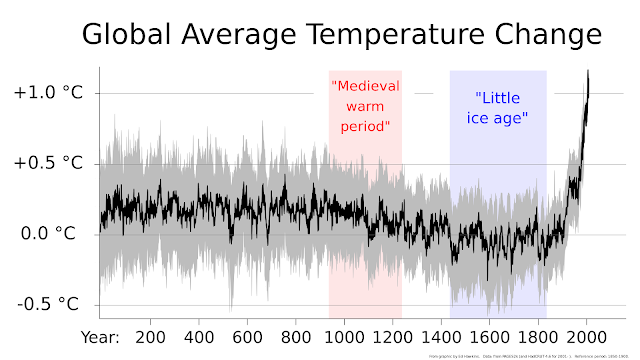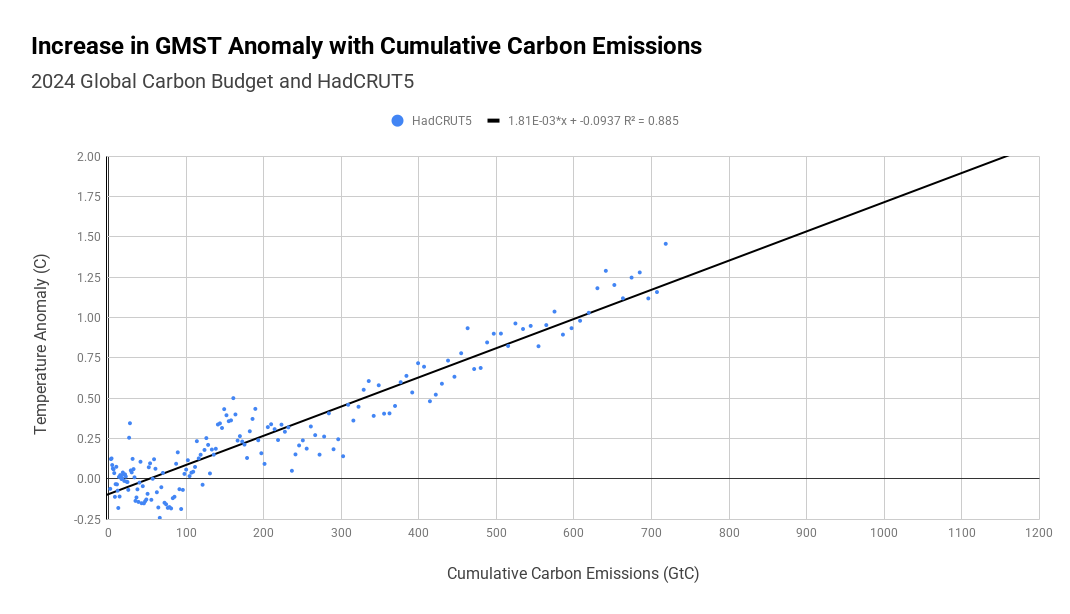Are We Still Coming Out of the Little Ice Age?
Once common refrain I hear among contrarians is that current warming shouldn't be considered exceptional or caused human activity because we're just "coming out of the Little Ice Age." The problem with this can be seen immediately by looking at the Pages2K reconstruction of global temperatures.
Berkeley Earth: 0.011 ± 0.028°C/decade (2σ)
NOAA: -0.006 ± 0.019°C/decade (2σ)
Here there's no agreement on the sign of these trends in the three datasets going back to 1850, and the CIs are larger than the trends, so a there was essentially no warming for 50 years following the end of the LIA. Global temperatures began to increase and accelerate with our carbon emissions. In fact, the correlation between CO2 and GMST is quite high, meaning that CO2 is a very good predictor of global temperatures. And yes, I know that correlation does not equal causation, but causation has been established elsewhere. Here I think it's fair simply to say that "coming out of the LIA" is not consistent with the data we have, but human activity (GHG emissions partially masked by aerosols) is very consistent with the data we have.
Here's the same graph plotted as CO2 radiative forcing and and a linear fit with global temperatures. The slope of this correlation corresponds to a TCR of 0.632*3.71 = 2.3 C, though this assumes that other forcings are negligible.
Update 2025: In addition to the fact that GMST trends were essentially flat between 1850 and 1900, of the 1.3°C warming above the 1850-1900 mean, fully 1.1°C of it has occurred since 1970. The trend in HadCRUT5 for 1970-2024 was 0.203 ± 0.018°C/decade (2σ), and 0.2°C/decade for 5.5 decades is 1.1°C. That is, the warming that began 120 years after the end of the LIA accounts for 85% of global warming. In fact, global warming tracks linearly with cumulative human carbon emissions.

.png)
.png)




Comments
Post a Comment